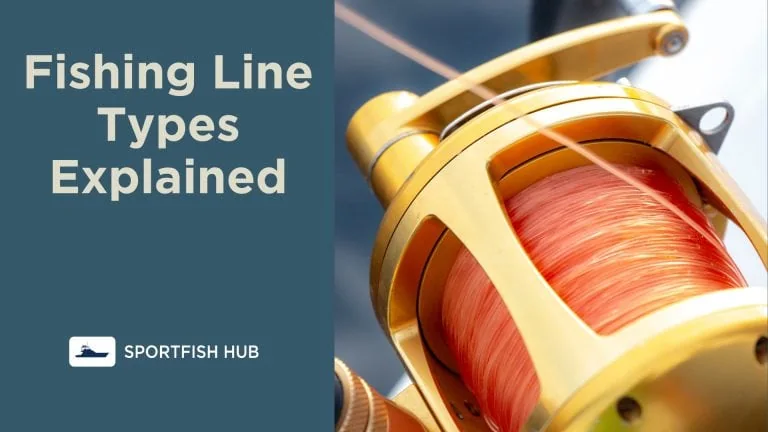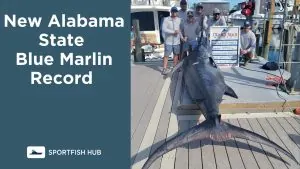Choosing the right fishing line is just another part of being a good fisherman. The three main types – monofilament, fluorocarbon, and braided – all have their own strengths and weaknesses depending on the fishing situation. This guide provides an in-depth look at fishing line types to help you select the best option.
Type of Fishing Line Key Takeaways:
- Monofilament is affordable, stretches well, and works for many situations
- Fluorocarbon is nearly invisible, abrasion-resistant, but stiffer and pricier
- Braided is ultra-strong, sensitive, and thin but can be visible and lose color
- Heavier lines and leaders needed for saltwater species compared to freshwater
- Fluorocarbon excels in clear water; braid handles vegetation well
- Monofilament provides stretch and shock absorption for freshwater fishing
- Match line type and strength to factors like water clarity, depth, cover
- Testing different lines for your specific needs is recommended
- Freshwater lines are 4-20 lbs; saltwater uses much heavier 15-80+ lbs
Helpful Video To Watch
Table of Contents
- Type of Fishing Line Key Takeaways:
- Helpful Video To Watch
- Monofilament Line
- Fluorocarbon Fishing Line
- Using Mono vs. Fluorocarbon
- Braid Line
- Key Considerations When Selecting Fishing Line
- Fishing Line Comparison
- Fishing Line Characteristics
- Freshwater Fishing Vs. Saltwater Fishing Line
- Frequently Asked Questions
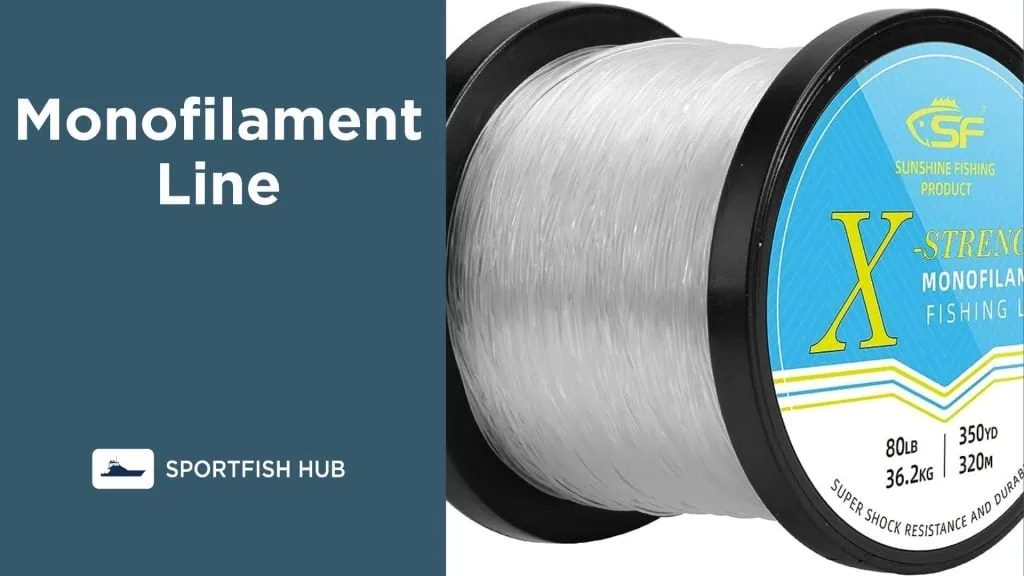
Monofilament Line
Monofilament (mono) is a type of fishing line that is composed of a single nylon strand. It’s an excellent all-around choice known for its affordability, knot strength, shock absorption, and low visibility.
Pros of Monofilament
- Inexpensive
- Easy to handle and cast
- Good knot strength
- Low memory
- Floats well
- Monofilament is available in various colors
Cons
- Absorbs water
- Moderate stretch
- Prone to UV damage
- Weaker pound-for-pound than other lines
Mono is ideal for beginners as it’s forgiving and versatile for most fishing situations. It works well for topwater lures since it floats. The stretch helps absorb head shakes when fighting fish. The color options let you adjust visibility.
Click the following link to check out our guide on How to String a Fishing Pole.
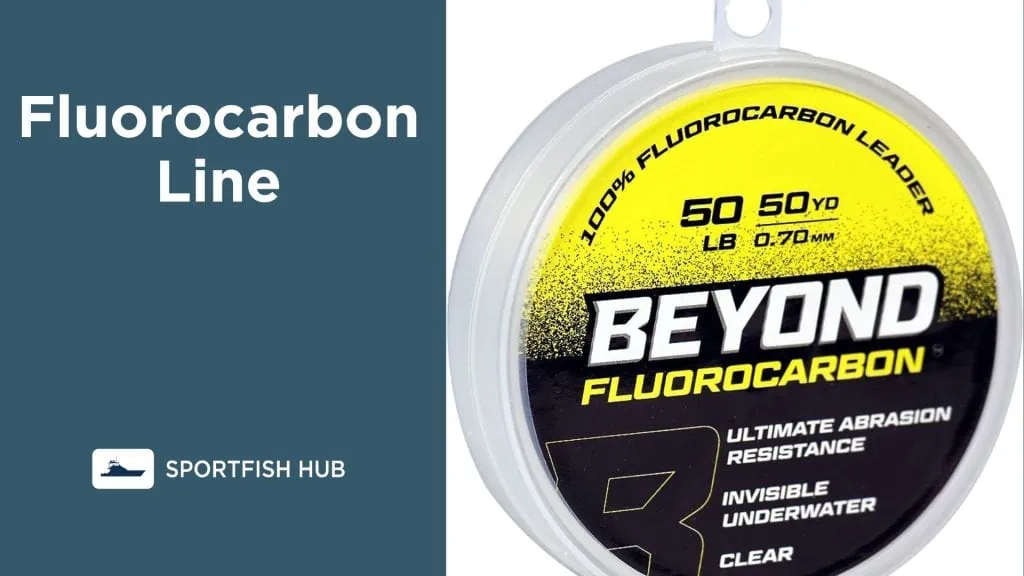
Fluorocarbon Fishing Line
Fluorocarbon fishing line is a type of line made of a dense synthetic polymer. It’s valued for its near-invisibility, sensitivity, abrasion resistance, and sinking properties.
Pros
- Virtually invisible underwater
- Sensitive with minimal stretch
- Resists abrasion
- Sinks rapidly
- Durable and long-lasting
Cons
- Expensive
- Stiffness makes knots tricky
- Can spring back and cause tangles
- Not optimal for topwater
The transparency and precision of fluorocarbon makes it a top choice for clear waters when fish are easily spooked. It’s also great for bottom fishing with jigs and works well as a leader.
Using Mono vs. Fluorocarbon
If you are wondering whether to use Fluorocarbon or Mono, here is a helpful table that might make your decision easier:
| Category | Fluorocarbon | Monofilament |
|---|---|---|
| Visibility | Near invisible | Low visibility |
| Sensitivity | High sensitivity, low stretch | Moderate stretch |
| Cost | Expensive | Affordable |
| Abrasion Resistance | Excellent | Good |
| Shock Strength | Moderate | High |
| Knots | Prone to failure | Holds well |
| Buoyancy | Sinks rapidly | Floats |
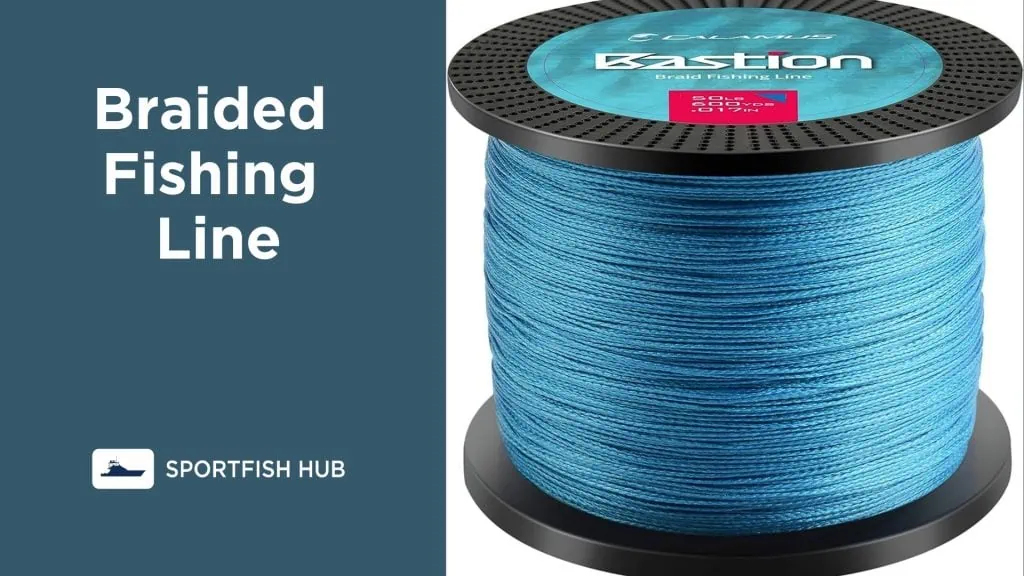
Braid Line
Braided fishing line consists of multiple woven polyethylene strands, and if you look at the photo above, you can clearly see why it’s called Braided. The key benefits are its zero stretch, sensitivity, and unmatched strength.
Pros
- Extremely strong for diameter
- Zero stretch enhances sensitivity
- Very thin profile
- No memory
- Handles abrasion well
- Resists UV light
Cons
- Visible to fish
- Limited knot options
- Can dig into itself on reels
- Expensive
- Tricky backlashes
Braided line is the choice for fishing heavy cover and vegetation. It provides maximum casting distance and works well on any reel. Downsides are visibility and cost. It’s popular for big game saltwater fishing.
If you fish a lot or just over a long period of time, you will need to read our guide on How to change fishing line.
Key Considerations When Selecting Fishing Line
- Fishing location and water clarity
- Target fish species
- Technique – jigs, crankbaits, topwater, etc.
- Required strength based on fish size
- Rod, reel, and recommended line weights
- Personal preference on stretch, stiffness, etc.
Trying out different lines for your specific needs is the best way to determine what works for you. Factor in the type of fishing you do and your own experience level.
Fishing Line Comparison
| Type | Strengths | Weaknesses | Best Uses |
|---|---|---|---|
| Monofilament | Affordable, versatile | Absorbs water, UV damage | Beginners, floating lures |
| Fluorocarbon | Abrasion-resistant, invisible | Expensive, stiff | Clear water, leaders |
| Braided | Sensitivity, strength, thin | Visibility, cost | Vegetation, saltwater |
Fishing Line Characteristics
| Characteristic | Mono | Fluoro | Braided |
|---|---|---|---|
| Cost | Cheap | Expensive | Expensive |
| Abrasion Resistance | Good | Excellent | Fair |
| Visibility | Low | Very low | High |
| Stretch | High | Low | None |
| UV Resistance | Poor | Excellent | Excellent |
There are no definitively “best” fishing lines – only the optimal choice for your specific fishing goals. Use these fishing line guides to narrow your selection. With the right line, you’ll be ready to start reeling them in!
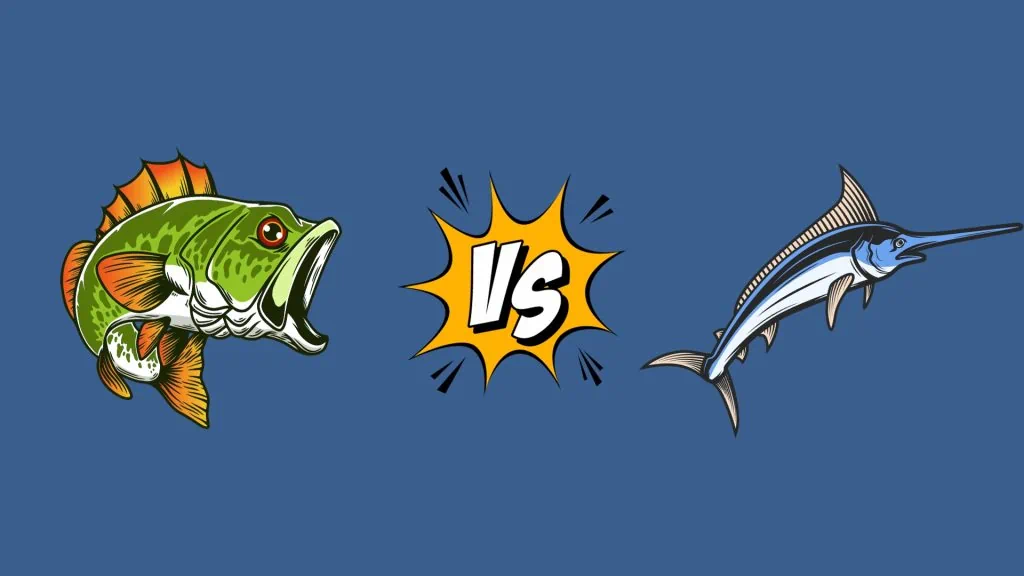
Freshwater Fishing Vs. Saltwater Fishing Line
The best choice in fishing line for freshwater compared to saltwater fishing involves some key considerations.
For freshwater, monofilament is a great all-around choice. It’s affordable, stretches well to absorb head shakes when fighting fish, and works for most species like bass, trout, or panfish. Fluorocarbon is also excellent for freshwater especially when fishing clear lakes and streams thanks to its near-invisibility.
For saltwater, use braided and fluorocarbon lines. Braided line is highly popular for its strength to handle big game species like tuna or marlin. Its zero stretch gives maximum sensitivity to detect bites when deep sea fishing. Fluorocarbon is also frequently used as a leader in saltwater for its transparency and abrasion resistance against toothy fish.
Other tips for choosing freshwater vs saltwater line:
- Use heavier pound test lines in saltwater – typically 20 lb+
- fluorocarbon line sinks faster, ideal for bottom fishing and jigging offshore
- braided line has no stretch for solid hooksets when fishing deep
- monofilament provides more stretch and shock absorption for freshwater
- fluorocarbon leader helps hide knots and main line when fishing clear lakes
- fly fishing lines are weighted to load rods quickly for casting
Evaluate factors like clarity, depth, cover, and typical size of fish when deciding on line type. The right combination of properties gives you the best chance to battle fish while avoiding break-offs.
Frequently Asked Questions
What lb test fishing line should I use?
Check your rod for the recommended line weight. For example, use 4-8 lb line for panfish and trout or 10-20 lbs for bass and pike. Go heavier for saltwater species.
What knot should I use with braided line?
Braid slips more than other lines. Good braid knots include the Palomar, double uni and San Diego jam knot. Avoid knots like the clinch knot with braid.
When should I use a leader?
Leaders help make the main line invisible to fish. Use a fluorocarbon leader when fishing clear water with braided line. Or attach a wire leader for toothy fish like pike.
How do I avoid line twists and tangles?
Make sure your line spools off reels in the same direction it comes off the filler spool. This prevents twisting. Pick line with low memory like braid. And watch out for overfilling reels.
Should I use colored fishing line?
Clear line works best in most situations. But colored lines can help visibility in certain conditions. Use blues and greens in clear water. Opt for darker yellows and reds in dirtier water.

